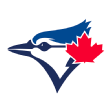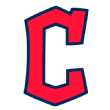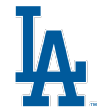Now that spring training is mercifully almost here, we complete our team-by-team tour of big-picture observations of the majors. Today’s tier consists of the top 10 clubs in baseball, ordered from worst to first by my current forecasted run differentials. The analyses for this group will have a different tone than the ones you read in the previous installments. The bottom-tier edition tended to be an evaluation of each team’s long-term prospectus. The middle-tier edition questioned the direction each team is headed. But for this group, the focus is more on the short term, with extra attention paid to the coming 2017 season.
Have these teams, all of whom look so good on paper now, really done enough to play into October?
 Toronto Blue Jays: Aren’t you going to go for it?
Toronto Blue Jays: Aren’t you going to go for it?
The Blue Jays are riding a crest wave. They’ve won 182 games during the past two seasons, their best two-season total since their World Series title teams in the early 1990s. They have also made the American League Championship Series both times, though their power bats have fallen flat one scant step short of the World Series in each case. Fans have noticed the rise, filling the Rogers Centre with nearly 3.4 million patrons a season ago.
With the Blue Jays peaking, Toronto GM Ross Atkins and team president Mark Shapiro and the rest of the front office have puzzled over how to get the rest of the way. Too often in the past, the Blue Jays threw money at their problems, usually to no avail. And while the current Jays aren’t frugal, their expenditures have been relatively modest and well in line with fair valuations of the talent they’ve added. Such was the case with departed slugger Edwin Encarnacion, who, despite gaudy counting stats, had shown some subtle signs of slippage. Thus, Encarnacion ended up signing a free-agent pact with the Indians for three years and $60 million.
The problem is that, while the Blue Jays clearly remain a contending team, their buffer isn’t that large. After all, they didn’t clinch a spot on last year’s AL wild-card game until the final day of the season. The minor league system has nothing in the way of short-term help. With Jose Bautista back in the fold but seemingly in decline, it felt like a winter to add, not subtract or run in place.
Replacing Encarnacion will be former Royal Kendrys Morales, who also signed a three-year deal but for just $33 million. The deal was one of the first struck during the free-agent season. While Morales can be a force at the plate, you get what you pay for. He can’t really play the field, whereas Encarnacion logged about half of Toronto’s innings at first base. At the plate, Morales projects to create about 22 fewer runs than Encarnacion, or roughly two fewer wins. But he’s making $9 million per season less so … should the Jays have sprung for an extra $4.5 million per win per season?
Frankly, I can see it both ways, and it’s easy to look at this in hindsight. In trying to get out in front of the market, the Jays could not have known how tough of a winter it would be for free-agent power hitters, which ended up limiting the length of Encarnacion’s eventual deal. Still, for the past couple of years, there was no tougher middle of the order to navigate than the one in Toronto, and while the Jays remain in the middle of the AL East chase, it feels like they are a little less fearsome entering the new season.
 Seattle Mariners: A bold experiment.
Seattle Mariners: A bold experiment.
The Mariners are one of the more interesting teams to me as spring training approaches. After the team fell just short in its playoff pursuit last season, GM Jerry Dipoto was one of the busiest execs in the game during the winter.
The core of the team remains intact: Robinson Cano, Kyle Seager, Felix Hernandez and Nelson Cruz are all back. But Dipoto has changed much of the roster around them.
The most obvious change is in the outfield. Last season, the Mariners featured an offense-first group that ranked near the bottom of the majors defensively. So Dipoto went out and acquired Mitch Haniger, seemingly a throw-in of the deal that brought shortstop Jean Segura to Seattle, and former Royals speedster Jarrod Dyson. They’ll be joined on the outfield depth chart by Guillermo Heredia, incumbent center fielder Leonys Martin and former Yankees farmhand Ben Gamel.
All of these players are, or recently were, center fielders, at least in the minor league level. The outfield defense should be a lot better. But will it save enough runs to offset the potential loss of offense?
Seattle will need to have one of the better-hitting infields in baseball to make this work. Luckily, in Cano, Seager and Segura, the M’s might have just the group to be up to the task.
Meanwhile, Cruz will DH full time as an offensive anchor. Dan Vogelbach, acquired from the Cubs in the deal last July that sent Mike Montgomery to Chicago to get the last out of the World Series, will platoon at first with former Athletic Danny Valencia. The Mariners need production from that position.
After all the wheeling and dealing, I’ve got the Mariners projected to finish right smack in the middle in runs, a drop from last season.
But the run prevention does look better, and that adds up to another run at a wild-card spot. Seems like a familiar outlook, but at least the process will look different.
 San Francisco Giants: Turn on the hoses.
San Francisco Giants: Turn on the hoses.
Generally, I’m not a big fan of handing out huge contracts to relief pitchers. But if any team can be forgiven for making such a splurge, it’s the Giants. Closer Mark Melancon signed a four-year deal worth $62 million to ease Bruce Bochy’s ninth-inning pain. That aching, on a scale of 1 to 10, had reached 11 by the time the Giants were eliminated by the Cubs in the National League Division Series.
The Giants blew a big league-high 30 saves last season even though they finished fourth in overall bullpen ERA. San Francisco entered the All-Star break with the NL’s best record, but with the bullpen blowing lead after lead, they went 12 games under .500 during the second half. Then, to put an exclamation on it, Bochy cycled through five relievers in the ninth inning of the Giants’ last game against the Cubs. Chicago put up four runs, won 6-5, and knocked San Francisco out of the bracket.
Beyond signing Melancon, the Giants did little in the way of bringing in outside talent. Relievers Santiago Casilla, Javier Lopez and Sergio Romo all walked as free agents, though Lopez remains unsigned. Starter Jake Peavy is also gone, as is outfielder Angel Pagan.
That leaves the Giants to fill several spots from within. Melancon should stabilize the back of the bullpen, putting less pressure on a solid and well balanced set-up staff that includes Hunter Strickland and Will Smith. The rotation looks like a powerhouse, especially if Matt Cain or Ty Blach can seize the No. 5 spot. My one concern is that, given the strength of the NL’s elite teams, you do have to wonder if the Giants could use one more bat.
Their roster makeup is familiar and has worked awfully well during Bochy’s tenure. That shouldn’t change. But the competition is fierce. The Cubs, Dodgers, Cardinals and Nationals all look better than the Giants on paper. Still, if San Francisco gets back into the postseason, and Bochy’s rotation can simply turn the ball over to Melancon, maybe their one big expenditure will prove to be enough.
 Cleveland Indians: One more run.
Cleveland Indians: One more run.
You can’t get closer to winning a World Series without actually winning it than the Indians did last fall. One upshot of the Cubs being Cleveland’s opponent is that, because so much of the national focus was on Chicago ending its 108-year-old title drought, few really had the energy to hammer the Indians for blowing a 3-1 series lead. Nor should anyone have done so. It was a great series between two terrific teams, and someone had to lose.
Not surprisingly, the Indians didn’t spend the winter licking their proverbial wounds. The signing of Encarnacion was the headliner, as he will replace Mike Napoli at first base. Just as the Blue Jays had to weigh the marginal loss of replacing Encarnacion with Morales, the Indians had to weigh the worth of their own marginal upgrade.
When you factor in Encarnacion’s durability — he played 160 games last season — he should be as much an upgrade over Napoli as Morales represents a downgrade to Encarnacion for Toronto. In other words, while they had to pay handsomely to do it, the Indians seem to have come out well ahead in power-bat juggling during the offseason.
That said, there is a case to be made that it won’t make that much of a difference. The Indians finished fifth in the big leagues in runs as it was. Encarnacion is 34 and had a spike in strikeout rate last season, and he certainly won’t upgrade the defense. Plus, if Cleveland is fortunate enough to get back to the World Series, Terry Francona will again have to decide how to get Carlos Santana into the lineup in the NL park, and, if Michael Brantley is healthy, sticking him in left won’t seem as good an option.
The Indians were able to splurge for what seems like a small upgrade because they are so strong and deep everywhere else on the roster. And the payroll is so lean that, even after adding Encarnacion, Cleveland still projects to finish in the bottom half of the majors in salary. Also, even if the upgrade turns out to be just a few runs, maybe those will be just the ones Cleveland needs to get over the top for the first time since 1948. After all, last season, one more well-timed run would have made all the difference.
 Boston Red Sox: Speaking of marginal upgrades …
Boston Red Sox: Speaking of marginal upgrades …
I’m a big believer in the notion of “if it ain’t broke, don’t fix it” when it comes to professional sports. Of course, the trick is to know when something is either broken or is about to break. The Red Sox weren’t broken last season. They won 93 games with the run differential of a 100-win team. They scored 101 more runs than any other team in the American League, finished third in team ERA and fourth in defensive runs saved. Sure, it all went sour in the ALDS against Cleveland, but randomness is a thing come October, and the Indians were (and are) a terrific team.
Nevertheless, with the retirement of David Ortiz, standing pat was not an option for Boston. That’s especially so for a team that during the past five years has been all or nothing, with two first-place finishes and three last-place finishes. So it was a challenging winter for team president Dave Dombrowski, who wouldn’t have it any other way.
One advantage about the run-scoring gap the Red Sox enjoyed over the rest of the league is that it allowed them to improve in multiple ways and not worry about overcommitting resources in a futile attempt to replace Ortiz’s missing 1.021 OPS.
Blessed with a ripe and plentiful farm system, Dombrowski landed one of the game’s best pitchers in Chris Sale to team with David Price and 2016 AL Cy Young winner Rick Porcello. That, in itself, should make the Sox an even more formidable postseason team come October. Toss in Drew Pomeranz and Steven Wright, and Boston has one of the five-best on-paper rotations in the game.
Dombrowski made a similarly bold but less ballyhooed move in sending out 3B Travis Shaw to Milwaukee for emergent setup man Tyler Thornburg.
As for replacing Ortiz, free-agent addition Mitch Moreland is at least a major defensive upgrade at first base. Hanley Ramirez will DH for the most part now, though John Farrell can mix and match a little more than he would have with Ortiz.
If all of this in total still sounds like a net run differential loss because of Ortiz’s absence, let’s not forget the biggest reason to think the Red Sox will again be one of the best offensive teams in baseball. That is, the tender ages of Xander Bogaerts, Mookie Betts and the just-hitting-his-prime Jackie Bradley Jr. They’ll be joined by rookie Andrew Benintendi, who got his feet wet in the majors last season and enters the season as Keith Law’s top-ranked overall prospect.
 St. Louis Cardinals: On the other foot.
St. Louis Cardinals: On the other foot.
The Cardinals have been able to lord their success over the archrival Cubs for decades. For now, the shoe is on the other foot.
After three straight NL Central titles, the Cardinals fell to second last season, 17½ games behind the history-shattering Cubs, and missed the postseason for just the fourth time since 2000. St. Louis won 86 games last season, and, in three of those non-playoff seasons, they’ve won at least 85. The Cubs don’t look like they’re going anywhere, but history strongly suggests that the Cardinals won’t be either.
Injuries were a problem. Lance Lynn missed the entire season because of Tommy John surgery. Jhonny Peralta, Matt Holliday, Matt Carpenter, Matt Adams, Michael Wacha, Brandon Moss, Mike Leake and Trevor Rosenthal were among those who spent time on the disabled list. Zach Duke underwent Tommy John surgery after the season. Overall, just six teams had more DL days, though it should be noted that two of the teams that had it worse — the Dodgers and Rangers — won their respective divisions.
A return to health would help, but that alone doesn’t figure to make up a 17½-game gap. The Cardinals lost Holliday to free agency but signed Dexter Fowler to take over in center field. The move not only gives the Cardinals one of the game’s better leadoff hitters and takes a key player away from the Cubs, but it allows St. Louis to move Randal Grichuk to left field. He was above average in center, but the Cardinals were weak in left, where Holliday logged the most time. So the overall outfield defense should be much improved, as long as Fowler retains the defensive gains he made during his final season with the Cubs.
The Cardinals’ best hope for getting back into the postseason, even if they can’t run down Chicago, is to outpitch everyone. Few teams have the starting-pitching depth that a healthy Cardinals rotation would, headed up by newly enriched Carlos Martinez. If Lynn is good to go, St. Louis will go six deep, giving Wacha a low-pressure chance to get his ship righted. Plus, Rosenthal is being transitioned into a flexible role that remains to be seen but could help keep the pressure off the starters in the middle innings.
 Washington Nationals: Rolling the dice with Bryce.
Washington Nationals: Rolling the dice with Bryce.
So much of how we remember a season is colored by the micro-sample of postseason play. The Nationals won 95 games and the NL East title last season and dropped a hard-fought, five-game NLDS series to the Dodgers to end their season. They had the second-best ERAs in both starting and relief pitching. They sported the run differential of a 97-win team. Yet … it felt disappointing.
Much of that probably stems from the baffling campaign of Bryce Harper, who in his age-23 season saw 295 points of his OPS from 2015 go missing. After a torrid start, he fell into a three-month power drought as teams pitched around him time and again. He homered nine times in April, but just 15 the rest of the way. In the postseason, he went 4-for-17 against the Dodgers with one extra-base hit — a double.
Baseball history is littered with inexplicable offseasons from Hall of Famers. Take your pick. Babe Ruth ate too many hot dogs and slumped to 25 homers in 1925, then hit 41 or more the next seven seasons after.
In 1946, Stan Musial hit .365. In 1948, he hit .376. In between, he hit .312 in 1947. In his prime, Mike Schmidt had a three-year OPS string of .967/.768/.950. It happens.
These are some lofty names, but I picked them because that’s the kind of career track that Harper appeared to be on. After a fairly quiet winter by his team, it looks like he really needs a bounce-back season in a big way. The Nationals’ offseason consisted of losing premier closer Mark Melancon without really replacing him, as well as trading away starting infielder Danny Espinosa. The splashy move was dealing away a startling package of prospects, including prized pitcher Lucas Giolito, to the White Sox for Adam Eaton.
If Harper regains his MVP form, maybe that’s enough. But what if he bounces back to something in between 2015 and 2016, or doesn’t bounce back at all? Trea Turner could continue his ascension now that he’ll be the everyday shortstop. The rotation looks strong again, led by ace Max Scherzer. But some of this could be offset if Daniel Murphy regresses, or if aging Ryan Zimmerman or Jayson Werth go into serious decline mode. The dropoff between Washington’s best four or five position players is steep.
Because of this lack of depth, the Nationals shape up fine on paper but don’t reach the same tier as the Dodgers and Cubs. It still feels like Washington isn’t quite maximizing the window it has to win right now, and as we’ll be reminded 953,087 times during the next couple of years, Harper hits free agency after the 2018 season.
 Houston Astros: No better time than the present.
Houston Astros: No better time than the present.
After improving by 16 wins from 2014 to 2015, the Astros ran into a little bit of plexiglass last season. That’s the old Bill James principle that teams demonstrating improvement one season tend to regress the next, and vice versa. Even a rising team like Houston couldn’t escape. It was almost entirely due to its run prevention, as the Astros jumped from first to fourth in AL runs allowed. That doesn’t sound terrible, but they gave up 83 more runs than they did in 2015 while scoring five less. Their Pythagorean win total — projected record based on run differential — dropped from 93 to 83.
Because the Astros are loaded with young stars on the rise — Carlos Correa, George Springer, Alex Bregman — there didn’t seem to be a giant need to overhaul the lineup. But they did. In comes Carlos Beltran, hero of Houston’s 2004 postseason run. Along with him are three veteran lefty hitters who will be platooned: catcher Brian McCann and corner outfielders Josh Reddick and Nori Aoki. The end result is an elite offense. Right now, only the Red Sox project to score more runs.
While the Astros were rumored to be in pursuit of a frontline starter for most of the winter, that hasn’t yet to come to pass. The bullpen, led by Ken Giles, Will Harris and Luke Gregerson, should be able to close out games. The rotation — Dallas Keuchel, Collin McHugh, Mike Fiers, Lance McCullers and Charlie Morton — will be the key to everything. Still, one more star-level starter would really complete this puzzle.
But as it is, after all this offseason aggression, the Astros are prime contenders, along with Boston and Cleveland, to win this year’s AL pennant.
 Chicago Cubs: The Curse of 109.
Chicago Cubs: The Curse of 109.
Have you heard? It has been 109 years since the Cubs have won back-to-back World Series titles. The world will be enraptured watching their quest to repeat. Doesn’t have quite the same ring as the curse of the billy goat, does it?
No, now the Cubs are just the plain old defending champions and a dynamic baseball team whose title window is wide open. Fowler and closer Aroldis Chapman were the big-ticket losses this season. But Chicago also lost depth in its pitching staff with fellow departees Jason Hammel, Travis Wood, Trevor Cahill and Joe Smith. Not to mention the well-covered retirement of David Ross, who now will split his time between taking it easy, performing duties in the Cubs’ front office and working as an analyst for ESPN.
The Cubs used their surplus of position players to plug Chapman’s hole, sending Jorge Soler to Kansas City for Wade Davis. If Davis is healthy, that’s a wash. Not only is Davis on Chapman’s tier as an end-of-game option, but he’s likely to be more amenable to an expanded role when the postseason comes around. Fowler’s spot will be filled by a combination of former Cardinal Jon Jay and Albert Almora, the latter a potential Gold Glover if he can hit enough to stick in the lineup.
The Cubs still have a nearly flawless roster, and there are ascending players all over the place. Kyle Schwarber will, hopefully, return for his first full season and is likely to be deployed as an unorthodox and highly dangerous leadoff hitter. The big concern, as has been pointed out many times, is a regression from the rotation in production, health, or both. It’s a legit concern, but one that most teams share.
The path to breaking the Curse of 109 is far from wide open. But the Cubs could hardly be better positioned for a repeat.
 Los Angeles Dodgers: The 10-man rotation.
Los Angeles Dodgers: The 10-man rotation.
The first thing that should be acknowledged is that by virtue of being the last team written about in this series, the Dodgers indeed own the best February forecast in my system. It’s not really a big surprise — Fangraphs tells a similar story, as do the newly released PECOTA projections at Baseball Prospectus.
My spreadsheet loves the Dodgers’ run prevention outlook. My preliminary forecast has them allowing 47 fewer runs than the Cubs, the second-stingiest team entering spring training. Offensive forecasts tend to be a lot more stable in these kinds of exercises than defense-and-pitching forecasts. But that’s an impressive baseline from which to start.
The Dodgers’ staff has it all. There is star power in Clayton Kershaw, Rich Hill and Kenley Jansen. There is tremendous upside in Julio Urias. There is a human filibuster in Pedro Baez. And there is depth galore with, by my count, at least 10 quality options to start games. That gives Dave Roberts the ability to manage his starters’ innings carefully and keep them primed for October. And all these hurlers will be working in front of an above-average defense.
The Dodgers will again feature baseball’s highest payroll. But the quality of what they ended up with almost justifies another quarter-of-a-billion-dollar expenditure. The offense should be above average, with a deep, well-balanced roster of position players. That group will be led by MVP candidate Corey Seager.
Am I declaring the Dodgers the favorite in the NL? Not really. As strong as their projection is, it’s only a few runs better than the Cubs, and the gap isn’t large enough for me to declare Los Angles as a clear winner. Subjectively, it’s hard to pick against the Cubs, given the buffer they had on the rest of baseball in 2016. Still, if we end up with a Cubs-Dodgers rematch in the 2017 National League Championship Series, I won’t be at all surprised.




